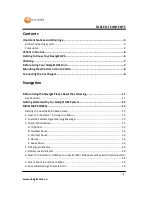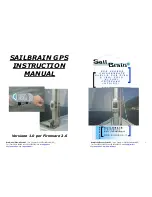
Chapter 3: Waypoints, Routes and Tracks
43
Chapter 3: Waypoints, Routes and
Tracks
3.1 Introduction
This chapter explains how to use the chart functions to navigate with
your HSB Series display. It covers the following topics:
• Controlling waypoints, including placing, moving, editing and deleting
waypoints.
• Working with routes, including creating a new route, managing routes
using the route database and editing routes.
• Going to waypoints and following routes.
• Transferring Waypoints and Routes
• Using tracks, including showing tracks, track set up and saving tracks.
Further functions, including measuring distances and setting alarms are
described in Chapter 4.
Safety
The chartplotter makes it very easy to mark a waypoint and travel
towards it. However, you should always check first that the route is safe.
If you are using the chartplotter in combination with a SeaTalk autopilot,
the autopilot will prompt for confirmation before it steers the vessel
towards the waypoint.
If you have entered your route using a small-scale chart, zoom in to a
larger scale to check for hazards, such as small shoals, that may not be
shown on the smaller scale charts.
Note: Until you are familiar with interpreting the chart display, you
should take every opportunity to compare the displayed objects
with visual targets, such as buoys and coastal structures. You
should practice harbour and coastal navigation during daylight
and in clear weather conditions.
The equipment should not be used as a substitute for good
navigational practice.
Chapter 3
Waypoints, Routes
& Tracks
Summary of Contents for HSB Chartplotter
Page 2: ...HSB Series Chartplotter owner s handbook Document number 81150_1 Date 18th September 1998...
Page 3: ......
Page 7: ...HSB Series Chartplotter iv...
Page 15: ...HSBSeriesChartplotter xii...
Page 46: ...Chapter2 GettingStarted 31...
Page 47: ...32 HSBSeriesChartplotter...
Page 57: ...42 HSBSeriesChartplotter...
Page 133: ...116 HSBSeriesChartplotter...
Page 139: ...122 HSB Series Chartplotter...
Page 154: ......
















































